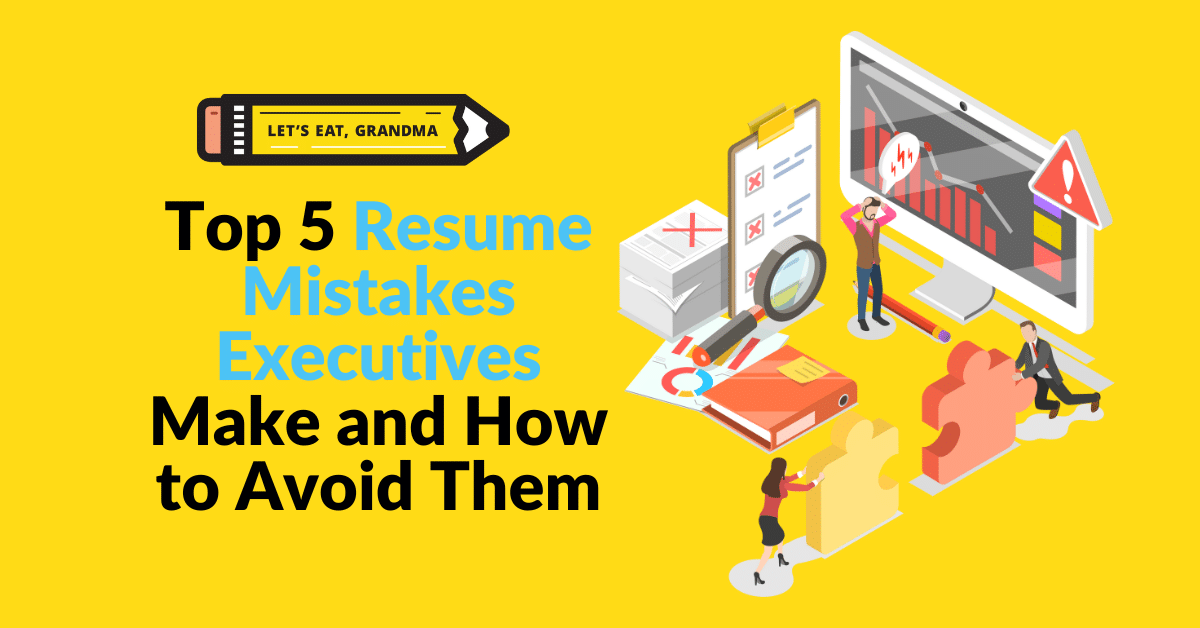So you started out your career highly motivated, learned all you can, wowed your supervisors, and moved up in the ranks. At first, it was almost easy to get a promotion or a better job at a new company – with your drive and accomplishments you easily stood out as the leader of the pack.
But then, as you advanced in your career, you found yourself competing against a much more experienced and exclusive pool of applicants. Now, you’re just one high-achiever competing against a bunch of other high-achievers.
Does this sound familiar? C-suite and senior-level roles are extremely competitive, and with the current climate of layoff, the pool of talent is broader, and perhaps hungrier, than ever.
With the stakes this high, you know it’s time to refocus and make absolutely sure your resume is up to par with the competition – and doesn’t sell you short. But do you know what you need to do to make sure you stand out? Research and preparation will put you above the rest. Plus, not everyone else is doing this much research, making them vulnerable to errors. Here are the top 5 common resume mistakes executives make and actionable strategies to avoid them.

Photo by bruce mars on Unsplash
Mistake No. 1: Overly generalized resume
We know, we know, you can do it all – and you have done it all
Many executives rely on a one-size-fits-all resume, assuming their seniority speaks for itself across industries or roles. They craft long, wordy resumes that cram in every achievement they’ve ever had.
However, this can lead to missed opportunities, as hiring managers struggle to see your specific fit for the role.This oversharing results in the resume overwhelming the executive recruiter or HR leader reading the resume, and the most relevant achievements get lost in the shuffle.
Solution: Perfect a base resume for each title you’re pursuing. This can be general title “buckets,” not specific titles. Make sure each base resume is closely tailored to the target role, highlighting the most relevant achievements and experiences.
Mistake No. 2: Focusing on responsibilities over achievements
Surprisingly, executives often detail what they were responsible for rather than focusing on measurable outcomes.
This is surprising because executives are often the ones with easy access to metrics at their fingertips. They have the data, they’re overseeing the budgets, they’re setting and monitoring the KPIs.
Sometimes when you’re dealing with the big picture day in and day out, it’s harder to hone in on the specific wins. However, resumes that don’t emphasize achievements fail to stand out. Hiring teams want to see concrete evidence of success and results. They want to know what you’ve done before, so they can be sure you can do it again.
Solution: Make sure every bullet point in your resume details a one-time, measurable achievement, with quantified results (e.g., revenue growth, cost savings). We follow this four-part formula:
(1) Active Verb + (2) Contribution and Skills Used + (3) Result
(4) Add Metrics to Contribution and/or Result
Start with a strong active verb that showcases initiative and leadership, highlight your contribution and the skills you used, explain the result or impact of your actions, and quantify your contribution and/or the result with metrics whenever possible.
For example, instead of saying “Managed a team,” you could say, “Led a team of 10 sales professionals to increase revenue by 20% in one year by implementing data-driven strategies.” This approach not only makes your accomplishments clear but also demonstrates the value you brought to your previous roles in a quantifiable way, which is crucial for standing out in competitive executive roles.

Photo by Vitaly Gariev on Unsplash
Mistake No. 3: Failing to showcase leadership and strategic impact
This is a very common one, and actually it’s also one I don’t see written about very often. Many executives undersell their leadership or focus only on operational tasks. This limits your appeal to companies looking for strategic thinkers who drive company-wide impact.
Solution: Emphasize your leadership roles, decision-making impact, and long-term strategy contributions. Don’t just talk about how you manage people, talk about how your personal approach to management as a whole has lifted up your team members, driving improvements in the bottom line and in their professional development. Include examples of strategic initiatives that demonstrate thought leadership, product or process innovation, and company-wide transformation efforts.
Mistake No. 4: Outdated formatting and style
OK, so maybe you’ve been in your company for a while, steadily rising up through the ranks. Your peers and leaders recognized your hard work and rewarded you for it. You never had to update your resume, because no one even asked for it (or it was just asked for as a formality).
As a result, your resume looks, well, outdated. Your format doesn’t align with modern best practices, and includes tell-tale signs of resume trends of yore, like lengthy blocks of text or an objective statement. You’ll need to fix this, pronto. An outdated resume format doesn’t just age you, it can even signal a lack of adaptability or tech savviness, traits crucial for modern leadership roles.
Solution: Read up on modern designs that reflect your professional brand. Use a clean, professional structure – including a summary of qualifications, clear section headers, and strategic use of white space to improve readability.

Photo by veera Batlu on Unsplash
Mistake 5: Ignoring LinkedIn and digital presence alignment
Like it or not, LinkedIn is here to stay, and it’s an increasingly important tool to support your professional brand. Executives often fail to ensure their LinkedIn profile and other online presence support their resume, leading to inconsistencies or underwhelming profiles. Hiring managers frequently cross-check LinkedIn profiles, and inconsistencies and incomplete profiles can create doubts about credibility, or just make you look unprofessional.
At the very least, you should have an up-to-date, fully completed profile that aligns with your resume. But even better, you can go a step further by becoming an active user on the platform, creating a profile with current, interesting posts, comments, and shared content that gives the hiring manager a more well-rounded picture of who you are and what you’ve done. Imagine how much more powerful an achievement on your resume becomes when a hiring manager sees it reinforced in a LinkedIn recommendation from a colleague.
Solution: Treat your LinkedIn profile with as much care and attention as you treat your resume. Take advantage of free LinkedIn review services to identify weak spots to address in your profile.
Conclusion
These five common resume mistakes executives often make – generalizing their resumes, focusing on responsibilities over achievements, underselling leadership and strategic impact, using outdated formats, and neglecting digital presence alignment – can significantly hinder their career progression.
By addressing these areas with targeted, measurable accomplishments, a modern resume format, and a consistent online presence, executives can create a more compelling narrative that stands out to hiring managers.
And remember, small edits and additions are much easier than large overhauls. Consider blocking off some time at the end of every quarter to take a look at your resume and LinkedIn profile and add accomplishments, skills, and certifications you’ve earned and remove older ones – or those that aren’t as relevant to your current focus.
It’s crucial to keep your resume dynamic, tailored to each opportunity, and aligned with current trends. If you don’t have the time to review and refine your resume, consider investing in professional assistance to ensure your next career move is backed by a resume that highlights your true potential.
Ready for more job search help?
Sign up for a free Senior Writer Resume Critique to see what’s holding you back from landing interviews. One of our top professional resume writers will give you personalized feedback on the top 3 items you can improve based on our expert practices!




